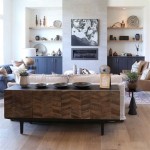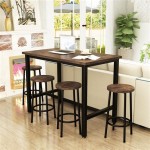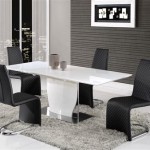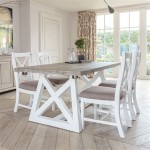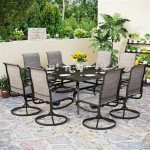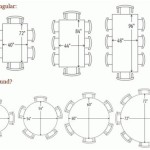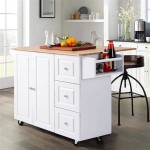Counter Top Tables and Chairs: A Versatile Furnishing Solution
Counter top tables and chairs represent a popular and adaptable furniture choice for a variety of spaces, ranging from residential kitchens and dining rooms to commercial establishments like restaurants and cafes. Their elevated height, typically matching standard kitchen counter height, offers a unique seating experience and aesthetic appeal, different from traditional dining sets. The selection of appropriate counter top tables and chairs involves careful consideration of factors such as style, material, size, and the intended use of the space. Understanding the nuances of these elements is essential for creating a functional and visually pleasing environment.
The term "counter height" generally refers to a surface elevation of approximately 36 inches. Correspondingly, counter height chairs and stools typically feature a seat height of around 24 to 26 inches. This height differential allows for comfortable seating at the counter or table. The terms "bar height" and "table height" represent separate dimensions, with bar height being taller (around 42 inches) and table height shorter (around 30 inches). Using the incorrect height chairs or stools can lead to discomfort and an unappealing aesthetic, making careful measurement and matching essential.
The versatility of counter top tables and chairs stems from their ability to function as both casual dining spaces and social gathering points. In kitchens, they often serve as breakfast bars or islands, providing convenient seating for quick meals or homework sessions. In dining rooms or living areas, they can act as stylish alternatives to traditional dining sets, offering a more relaxed and informal atmosphere. Furthermore, their compact footprint makes them suitable for smaller apartments or spaces where maximizing floor area is a priority.
Design and Style Considerations
The aesthetic appeal of counter top tables and chairs plays a significant role in their selection. A vast array of styles exists, ranging from contemporary and minimalist designs to more traditional and rustic options. Matching the style of the furniture to the existing décor of the room is crucial for creating a cohesive and harmonious environment.
Contemporary designs often feature clean lines, simple shapes, and materials like metal, glass, and molded plastic. These styles tend to be minimalist in nature, focusing on functionality and a sleek appearance. They are well-suited for modern kitchens and dining areas with a similar aesthetic.
Traditional styles, on the other hand, may incorporate more ornate details, such as carved wood, tufted upholstery, and decorative hardware. These styles evoke a sense of elegance and sophistication, complementing classic or traditional interiors. The use of richer colors and textured fabrics is also common in traditional counter top tables and chairs.
Rustic designs draw inspiration from natural materials and a more informal aesthetic. Wood with distressed finishes, exposed metal accents, and woven fabrics are frequently employed in creating a rustic look. These styles are ideal for spaces aiming for a warm and inviting ambiance, often found in country-style kitchens or dining rooms.
Beyond these broad categories, numerous other styles exist, blurring the lines and incorporating elements from different design movements. Industrial styles, for example, often combine metal and wood, emphasizing functionality and a raw, utilitarian aesthetic. Mid-century modern designs feature clean lines, organic shapes, and a focus on functionality, drawing inspiration from the design trends of the mid-20th century.
The backrest design of the chairs or stools also contributes significantly to the overall style. Options range from backless stools, which are space-saving and minimalist, to chairs with full backrests, offering greater comfort and support. The shape and design of the backrest can further influence the overall aesthetic, with curved backrests adding a touch of elegance and straight backrests providing a more contemporary feel.
Material Selection and Durability
The materials used in the construction of counter top tables and chairs directly impact their durability, aesthetics, and maintenance requirements. Common materials include wood, metal, plastic, and various combinations thereof. Each material offers distinct advantages and disadvantages.
Wood is a classic and versatile material, offering a wide range of finishes and styles. Hardwoods like oak, maple, and cherry are known for their durability and resistance to wear and tear. Softwoods like pine are more affordable but may be more susceptible to scratches and dents. Wood can be stained, painted, or left with a natural finish, allowing for customization to match the existing décor.
Metal is a durable and often lightweight material commonly used for the frames and legs of counter top tables and chairs. Steel, iron, and aluminum are popular choices, each offering varying degrees of strength and resistance to corrosion. Metal frames can be powder-coated for added protection and a wider range of color options.
Plastic is a versatile and often affordable option, particularly for chair seats and backrests. Molded plastic can be shaped into a variety of designs, offering both comfort and visual appeal. Plastic is also easy to clean and maintain, making it a practical choice for high-traffic areas. However, the durability of plastic can vary depending on the quality of the material used.
Upholstery plays a significant role in the comfort and aesthetics of counter top chairs and stools. Fabric upholstery offers a wide range of colors, patterns, and textures, allowing for customization to match the existing décor. Leather upholstery is a durable and luxurious option, offering a classic and sophisticated look. Faux leather is a more affordable alternative that mimics the appearance of real leather while being easier to clean and maintain.
The tabletop material also influences the overall look and durability of the table. Wood tabletops are a classic and versatile choice, offering a warm and inviting feel. Stone tabletops, such as granite or marble, are durable and elegant, adding a touch of sophistication to the space. Glass tabletops are sleek and modern, creating a sense of openness and lightness. Laminate tabletops are a cost-effective and durable option, offering a wide range of finishes and patterns.
Size and Space Planning
Determining the appropriate size and configuration of counter top tables and chairs is crucial for ensuring both functionality and comfort. The available space, the number of people who will be using the furniture, and the intended use of the space all need to be considered.
When selecting a counter top table, it's essential to measure the available space carefully. The table should be sized appropriately to allow for comfortable seating and movement around the table. A general rule of thumb is to allow at least 24 inches of space per person along the perimeter of the table. This ensures that each person has enough room to eat and interact comfortably.
The number of chairs or stools needed will depend on the size of the table and the intended use of the space. If the table is primarily used for quick meals or snacks, fewer seating options may be necessary. If the table is used for more formal dining or social gatherings, more seating may be required. It's generally best to err on the side of caution and provide slightly more seating than initially anticipated.
The spacing between the counter top table and other furniture in the room is also important. Adequate clearance should be provided to allow for comfortable movement and prevent overcrowding. A minimum of 36 inches of space should be maintained between the edge of the table and any walls or other furniture. This allows for easy access to the seating and prevents the space from feeling cramped.
In smaller spaces, consider using counter top tables and chairs with a smaller footprint. Round tables or square tables with rounded corners can be more space-efficient than rectangular tables. Backless stools can also help to save space, as they can be easily tucked under the table when not in use. Furthermore, tables with drop-leaf extensions can be a helpful solution for accommodating extra guests when needed.
The height of the counter top chairs or stools is also crucial for comfort. The seat height should be approximately 10 to 12 inches lower than the surface of the counter top table. This allows for comfortable legroom and prevents the knees from hitting the underside of the table. Adjustable height stools offer added versatility, allowing for customization to suit different users and situations.
Retractable Stone Plate Kitchen Island Dining Table Integrated Household Large Apartment High End Italian Light Luxury Medium Tables And Chairs Set Shopee Singapore

White Counter Height Bar Style Dining Tables Chairs Sets Comfyco

Counter Tables In The Kitchen Artisan Crafted Iron Furnishings And Decor Blog

Dining Bar Table 2 Chairs Set 120x40cm Slim Narrow Small

Black Counter Height Bar Style Dining Tables Chairs Sets Comfyco

Americana Modern Dining Island Counter Height Table 72 In X 42 To Parker House Furniture

Kitchen Dining Tables

Modern Dining Room Kitchen Furniture Board

Custom Made Modern Wooden Countertop Stainless Steel Legs Dining Table Furniture Living Room Canteen Restaurant

Round Wood Nesting Small Dining Table Set For 4 800mm Modern White Kitchen And Chairs Homary

